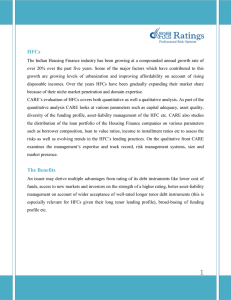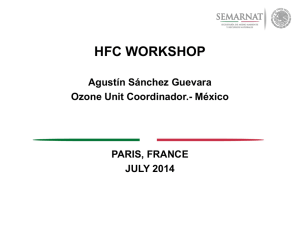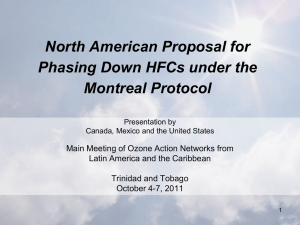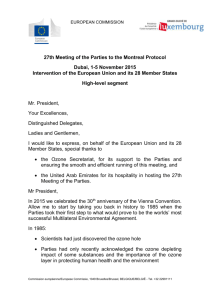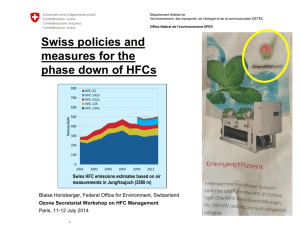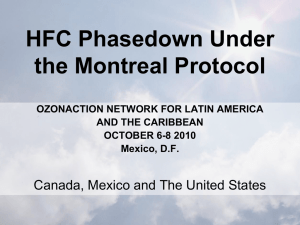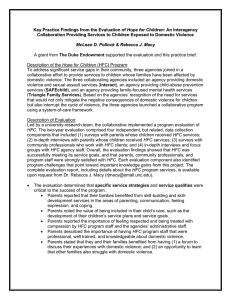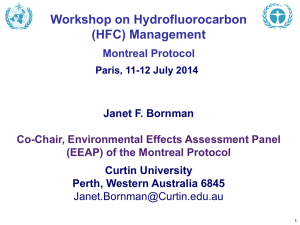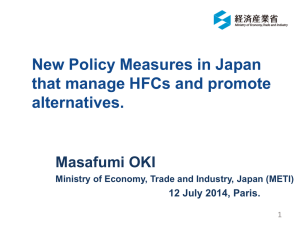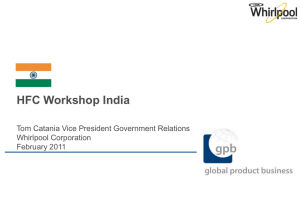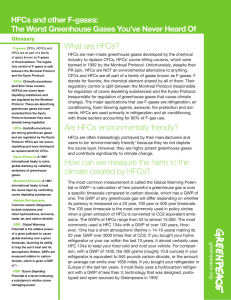Addressing HFC consumption under the Montreal
advertisement
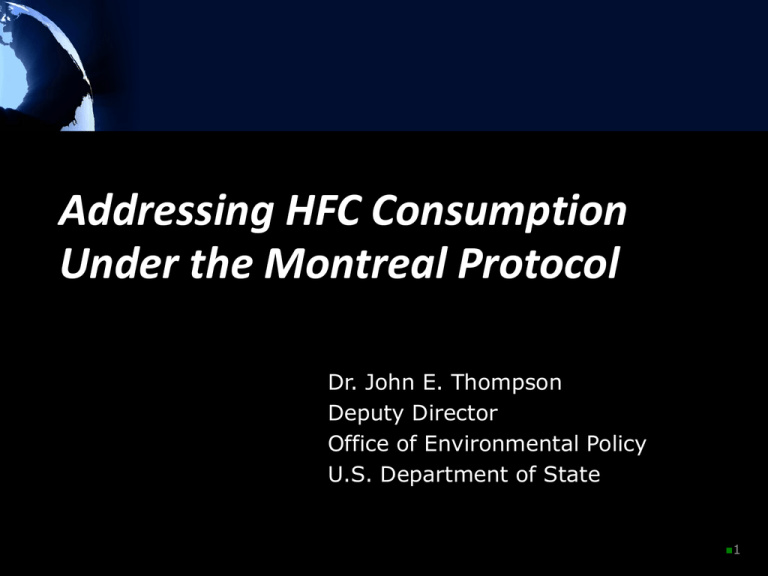
Addressing HFC Consumption Under the Montreal Protocol Dr. John E. Thompson Deputy Director Office of Environmental Policy U.S. Department of State 1 Scope of Presentation • Rationale for Action • Linkages between ODS and HFCs • 2010 North American Amendment Proposal Overview • Environmental Benefits 2 Projected HFC Growth: PNAS, 2009, Velders, et al U.S. EPA, 2009 Historical & Projected HFC Consumption 5,000 A5 Non-A5 World Consumption (MMTCO2eq) 4,000 3,000 2,000 1,000 0 2000 2010 2020 2030 2040 2050 HFC growth linked to ODS phaseout, expanding availability of air conditioning & refrigeration 3 Taking Action for Sound ODS Phaseout • HFC Growth is direct result of ODS phaseout • Montreal Protocol experience and success on HFC-sectors – – – – – – Refrigeration Air Conditioning Foams Aerosols Solvents Fire Suppression • Montreal Protocol Heavily Involved in addressing HFCs – Phaseout of HCFCs currently being implemented – Multilateral Fund incentivizes transition to climate-friendly alternatives 4 Many Substitutes Available and More on the Way • “The ultimate choice of technology to phase-out HCFCs will be based on ozone depletion and also climate impact, health, safety, affordability and availability, as Decision XIX/6 requires” May 2010 TEAP XXI/9 Task Force Report Assessment Of HCFCs and Environmentally Sound Alternatives • 2010 TEAP Progress Report – Substitutes for many sectors and sub-sectors available – Additional substitutes under development – Global acceptance for alternatives strengthening 2010 North American Proposal • • • • Control HFC production and consumption Control by-product emissions of HFC-23 Covers 20 HFCs, including 2 HFOs Phasedown, not Phaseout of HFCs – Baseline is combination of HCFC and HFC consumption (allows some growth) – Alternatives already available or in pipeline in some sectors (MVAC, domestic refrigeration, foams) – Alternatives unavailable in a few sectors (MDIs) – Caps initiate in 2014 and 2017 – Plateau 15% of Baseline, GWP-weighted (2033 and 2043) • Ways to Achieve Phasedown – Transition out of HFCs – Smaller Charge Sizes – Move from High to Low GWP HFCs 6 Trilateral Proposal Phasedown Schedule 100% 90% 90% Non-A5 Reduction Steps 80% 80% Cap - Percent of Baseline 90% 80% A5 Reduction Steps 70% 70% 70% 60% 50% 50% 50% 40% 30% 30% 30% 20% 15% 15% 10% 0% 2010 2015 2020 2025 2030 Years 2035 2040 2045 2050 7 2010 Trilateral Amendment Proposal • HFC-23 Byproduct Control – From HCFC-22 Production – Significant HFC-23 Emissions Uncontrolled – By-product emissions subject to control • Obligation eligible for Multilateral Fund assistance – Additional benefits of 6,000 MtCO2eq by 2050 • Technical and Financial Support – MLF – Incremental cost model – has worked in these sectors – Bigger problem if we wait • Complements but leaves unchanged UNFCCC obligations – Supports global efforts to reduce GHGs – Leave HFCs in UNFCCC basket – accounting and reporting 8 Substantial Climate Benefits Possible • Trilateral Proposal global cumulative benefits: – ~3,000 MtCO2eq* through 2020 • Developed country Parties = 3,000 MtCO2eq • Developing country Parties = 150 MtCO2eq – ~88,000 MtCO2eq through 2050 • Developed country 5 Parties = 43,000 MtCO2eq • Developing country Parties = 45,000 MtCO2eq • EPA’s Analysis of HFC Production and Consumption Controls: www.epa.gov/ozone/downloads/Analysis_of_HFC_Production_and_Consumption_Co ntrols.pdf *MtCO2eq is the same as MMTCO2eq 9 North American Proposal Benefits consumption reductions emission reductions emissions 100,000 90,000 MMTCO2eq 80,000 70,000 60,000 50,000 40,000 30,000 20,000 10,000 0 North American Micronesia Montreal Proposal (2014- Proposal (2013- Protocol (19902050) 2050) 2010) Accelerated HCFC Phaseout (2010-2039) Kyoto Protocol (2008-2012) Copenhagen Accord (20122020) Annex I Emissions in 2007 Final Thoughts • Montreal Protocol appropriate vehicle – – – – HFCs use tied to ODS phaseout Successful global agreement Effective financial mechanism Sector expertise • Known alternatives, technologies, and better handling can reduce HFC consumption • Developed countries start transition • Significant near-term climate benefits 11
